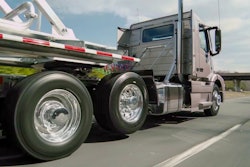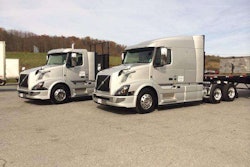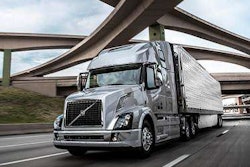In August, Volvo announced its latest fuel saving technology, Adaptive Gearing, which is, once again, based around the company’s versatile I-Shift automated manual transmission. This week, I was with Volvo at the company’s North American Class 8 truck plant in New River Valley, Va., to check out this new fuel enhancement concept and see additional 2016 VNL features.
According to Volvo product manager Jason Spence, the new features, both inside and outside of the truck, reflect lessons the company learned from its participation with the government-sponsored Super Truck research program and has since put into production.
The vaunted VN Series of tractors helped kick off the aerodynamic push in North America. And although it began life as an already slippery design, Volvo’s engineers have managed to finagle another 3.5 percent fuel economy boost out of it thanks to a host of refined airflow features, including a new bumper and tractor side fairings.
Under the hood, Volvo has managed to squeeze another 2 percent fuel economy boost out of its XE integrated drivetrain. The brains of the XE drivetrain is Volvo’s feature-packed I-Shift AMT, which the company says is now going out the door on 74 percent of all new trucks it has sold this year. Given the flexibility this AMT offers Volvo, it is not surprising to hear Volvo is now moving away from “one size fits all” powertrain offers and drilling down into customer needs to offer more application-focused drivetrains.
And that’s the kind of thinking that led the company to the concept of Adaptive Gearing.
The concept is actually pretty simple: building on the already-formidable sensory and computing power offered by the I-Shift, Volvo engineers have added load-sensing EMCs to the system. As a result, the XE drivetrain can now adjust horsepower and gear selection to match specific vehicle haul configurations and deliver either power or fuel economy on demand.









